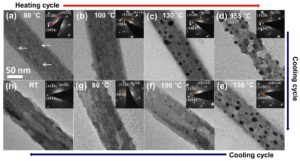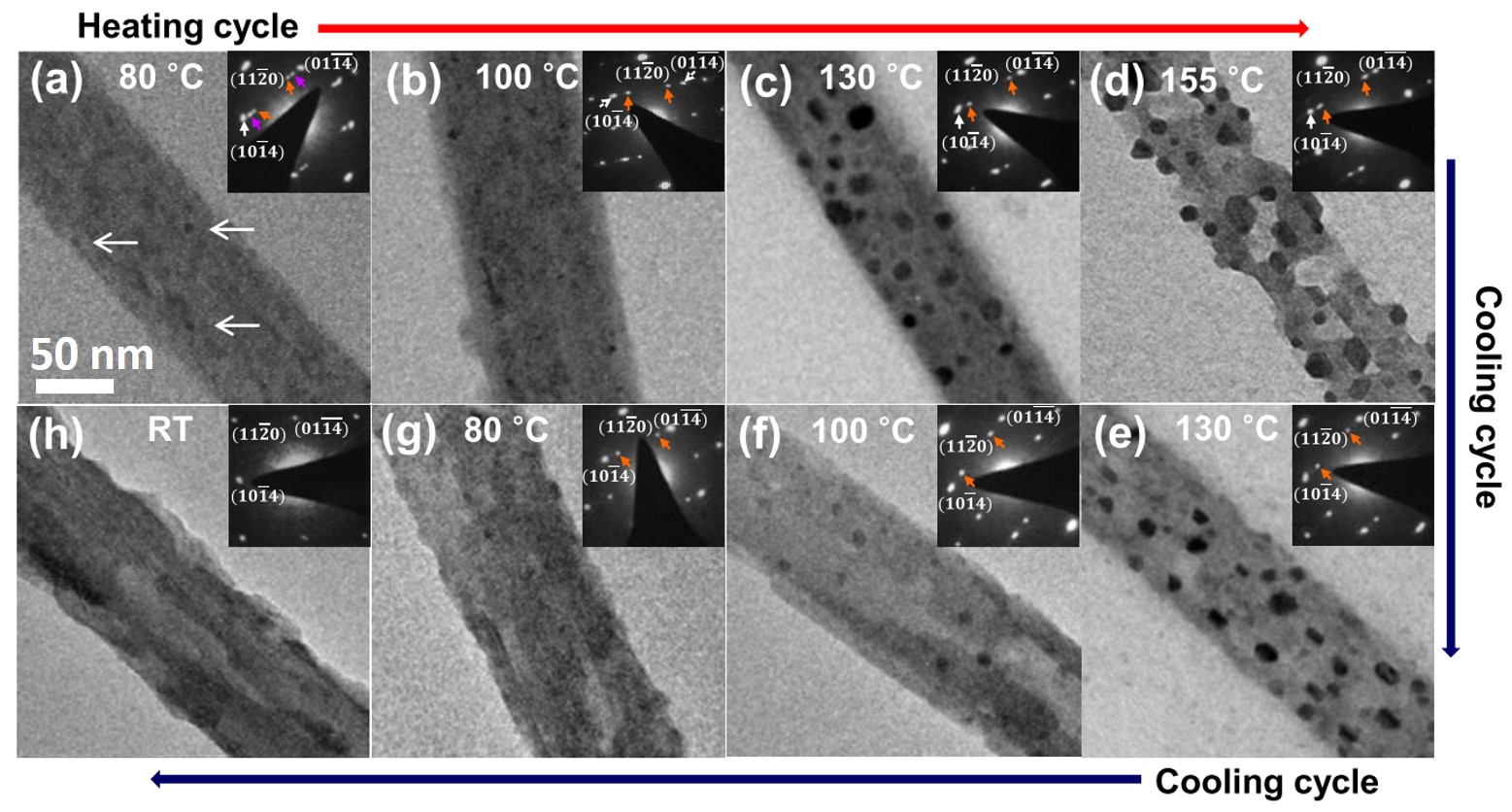Researchers at the Gwangju Institute of Science and Technology (GIST) Korea Institute of Science and Technology (KIST) and IBM T. J. Watson Research Center used a Hummingbird Scientific TEM Gas Cell Heating holder to study the decomposition of perovskite nanorods. Perovskites are attractive materials for application in solar cells as they can be cheaply produced and have been achieving higher efficiencies.
They report on the fabrication of the first single crystal perovskite nanorods of the intermediate phase (MAI-PbI2-DMSO). They studied phase evolution in these nanorods while annealing using the in-situ TEM gas-heating holder. They track the full crystal structure during annealing and cooling of the different phases as they evolve. One of the transformations is the perovskite decomposition to PbI2, which is shown to be reversible upon cooling and is a critical observation for understanding long-term device reliability. The researchers also use a thermodynamic model to suggest that the decomposition is driven by entropy.
They published their findings in ACS Central Science.

In situ TEM observation during an annealing cycle. It shows a sequence of BF TEM images acquired from a video obtained during heating and cooling cycles for perovskite conversion, decomposition, and recovery. Copyright © 2020 American Chemical Society
Abstract: Yong-Ryun Jo, Jerry Tersoff, Min-Woo Kim, Junghwan Kim, and Bong-Joong Kim, Reversible Decomposition of Single-Crystal Methylammonium Lead Iodide Perovskite Nanorods, ACS Cent. Sci. 2020 Abstract
View All News

